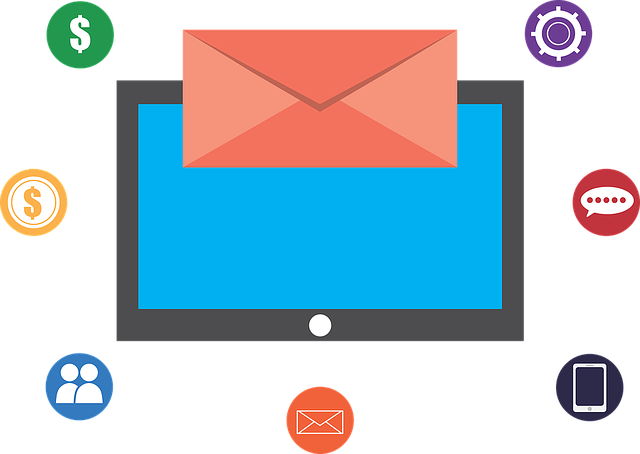Tired of sending emails into the abyss, never to be opened or acted upon? Well, fear not, dear reader, for we have the solution to your email campaign woes!
In this article, we will delve into the art of email campaign management and reveal the secrets to creating compelling content that actually converts. Yes, you heard that right – we have cracked the code to capturing your audience’s attention and enticing them to take action.
No longer will your meticulously crafted emails go unnoticed or be condemned to the dreaded spam folder. We will guide you through understanding your target audience, crafting attention-grabbing subject lines, creating engaging content, and using call-to-actions effectively.
But that’s not all – we’ll also teach you how to test, refine, and maintain a consistent brand voice throughout your campaigns.
So, get ready to revolutionize your email marketing and watch those conversions soar!
Key Takeaways
- Conduct thorough target audience research and customer segmentation to understand the needs and preferences of your audience.
- Analyze email performance metrics such as open rates, click-through rates, and conversion rates to identify patterns and trends that can inform future content decisions.
- Incorporate subject lines and content that consistently perform well into future email campaigns, while adjusting or eliminating elements that underperform.
- A/B test subject lines and content to optimize email campaign performance, and use data-driven insights to adapt and refine strategies.
Understand Your Target Audience
To create compelling content that converts, you need to truly understand your target audience’s desires and motivations, so you can effectively tailor your message to resonate with them.
Conducting thorough target audience research and customer segmentation is essential in this process. By gathering data and analyzing it, you can identify key demographics, preferences, and pain points of your audience. This knowledge allows you to craft personalized messages that address their specific needs and concerns.
Understanding their desires and motivations will help you create content that speaks directly to them, capturing their attention and building a connection. Once you have a deep understanding of your target audience, you can move on to the next step of crafting attention-grabbing subject lines that entice them to open your emails and discover more.
Craft Attention-Grabbing Subject Lines
Capture attention with subject lines that instantly grab your reader’s interest and compel them to open your email. Subject line optimization is crucial for increasing open rates and ensuring your message gets noticed.
To achieve this, consider the following strategies:
- Use a sense of urgency: Highlight limited-time offers or exclusive deals to create a sense of FOMO (fear of missing out).
- Personalize your subject lines: Incorporate your recipient’s name or other relevant details to make the email feel more tailored to their needs.
- Ask intriguing questions: Pose thought-provoking questions that pique curiosity and make your reader want to find the answers inside your email.
By crafting attention-grabbing subject lines, you’ll entice your audience to open your email and engage with your content.
Speaking of engaging content, let’s dive into the next section on how to create compelling and relevant email content that converts.
Create Engaging and Relevant Content
Get your audience hooked by crafting engaging and relevant content that will leave them wanting more. Content personalization is key to capturing your audience’s attention. Tailor your emails to the specific needs and interests of your recipients. Use their name and include information that’s relevant to their preferences or past interactions.
Additionally, storytelling techniques can be highly effective in getting your message across. Share relatable stories or anecdotes that create an emotional connection with your audience. This’ll help them remember your brand and feel more inclined to take action.
However, don’t forget to use call-to-actions effectively. Encourage your readers to take the next step by using clear and compelling calls-to-action that guide them towards conversion.
Use Call-to-Actions Effectively
Are you struggling with getting your audience to take action on your email campaigns?
In order to effectively use call-to-actions, it’s crucial to clearly state the desired action you want your readers to take.
By using persuasive language, you can motivate and encourage your audience to take the desired action, whether it’s making a purchase, signing up for a newsletter, or downloading a resource.
Remember, crafting compelling and persuasive call-to-actions is key to driving conversions and achieving your email marketing goals.
Clearly state the desired action
Achieve your goals effortlessly by clearly stating what you want your audience to do in your email campaigns. State clearly and concisely the desired action you want your readers to take. Motivate effectively by using persuasive language and compelling content.
Here are three ways to clearly state the desired action in your email campaigns:
-
Be specific: Clearly outline the action you want your audience to take, whether it’s making a purchase, signing up for a newsletter, or attending an event. Avoid ambiguity and provide clear instructions.
-
Use strong verbs: Incorporate action-oriented words that inspire your readers to take immediate action. Use words like ‘buy now,’ ‘register,’ or ‘join today’ to create a sense of urgency and motivation.
-
Highlight benefits: Clearly communicate the benefits your audience will receive by taking the desired action. Whether it’s saving money, gaining exclusive access, or solving a problem, emphasize the value they will gain.
By clearly stating the desired action, you can effectively guide your audience towards taking the desired action. Use persuasive language to encourage action and propel your email campaign towards success.
Use persuasive language to encourage action
Motivate your readers to take action by infusing your email campaigns with persuasive language that compels them to engage. Use persuasive techniques and psychological triggers to create a sense of urgency and excitement.
A powerful call-to-action can make all the difference in converting your readers into customers. Start by using action-oriented verbs that inspire action, such as ‘buy now’ or ‘sign up today.’ Additionally, create a sense of exclusivity by offering limited-time promotions or highlighting the benefits of taking immediate action.
Remember to keep your language concise and impactful, focusing on the value your readers will receive by engaging with your email. By using persuasive language effectively, you can increase the likelihood of your readers taking the desired action.
Transitioning into the next section, it’s important to test and refine your email campaigns to maximize their effectiveness.
Test and Refine Your Email Campaigns
When it comes to testing and refining your email campaigns, you need to focus on two key points: A/B testing subject lines and content, and analyzing metrics to make necessary adjustments.
By conducting A/B tests, you can determine which subject lines and content resonate better with your audience, ultimately increasing your open and click-through rates.
Additionally, analyzing metrics such as open rates, click-through rates, and conversions will provide valuable insights to optimize your campaigns and maximize their effectiveness.
So, don’t underestimate the power of testing and refining your email campaigns – it’s the secret to achieving better results and conversions.
A/B test subject lines and content
Try experimenting with different subject lines and content variations in your email campaigns to see what resonates best with your audience. A/B testing formatting and personalization techniques can help you optimize your email campaign’s performance and increase conversions.
Here are four key strategies to consider:
-
Test subject lines: Try different variations to see which ones have the highest open rates. Experiment with different lengths, tones, and personalization techniques to grab your audience’s attention.
-
Vary content: Test different types of content, such as short and concise versus longer and more detailed. Explore various formats, including videos, infographics, or plain text, to see what engages your subscribers the most.
-
Segment your audience: Divide your email list into smaller segments based on demographics, interests, or behavior. Test different subject lines and content variations tailored to each segment to deliver more personalized and relevant messages.
-
Analyze metrics and adjust accordingly: Monitor key metrics like open rates, click-through rates, and conversions. Use this data to refine and adjust your subject lines and content, ensuring you continue to deliver compelling messages that convert.
By conducting A/B tests and analyzing metrics, you can continuously improve your email campaign’s effectiveness and drive better results. Now, let’s explore how to analyze metrics and adjust accordingly to further optimize your email campaigns.
Analyze metrics and adjust accordingly
Now that you’ve tested different subject lines and content in your email campaigns, it’s time to analyze the metrics and adjust your strategies accordingly.
Tracking performance is crucial to understanding what’s resonating with your audience and what isn’t. Look at open rates, click-through rates, and conversion rates to see which emails are driving the most engagement and conversions.
Identify patterns and trends to inform your future email content decisions. If you find that certain subject lines or types of content consistently perform better, incorporate those findings into your future campaigns.
On the other hand, if certain elements are underperforming, consider tweaking or eliminating them altogether. Remember, the key is to constantly adapt and refine your email campaign strategies based on data-driven insights.
By adjusting your approach, you’ll be able to build and maintain a consistent brand voice that truly connects with your audience.
Build and Maintain a Consistent Brand Voice
Developing a strong and consistent brand voice is the key to captivating your audience and converting them into loyal customers. Brand consistency is crucial because it helps your audience recognize and connect with your brand. By maintaining a consistent brand voice, you establish a sense of trust and credibility.
Your audience will know what to expect from your emails and will be more likely to engage with your content. A consistent brand voice also helps to reinforce your brand identity. It showcases your unique personality and values, making your brand more memorable and relatable.
To achieve brand consistency, it’s important to define your brand guidelines, including tone, language, and style. These guidelines should be applied consistently across all your email campaigns, ensuring a cohesive and impactful brand experience for your audience.
Frequently Asked Questions
How can I segment my email list to better understand my target audience?
Segmenting your email list offers numerous benefits for better understanding your target audience. By categorizing subscribers based on demographics, interests, and behavior, you gain valuable insights that enable you to tailor your content and messaging.
This level of personalization enhances engagement, boosts open rates, and increases conversions. Target analysis through segmentation allows you to effectively deliver the right message to the right people at the right time, maximizing the impact of your email campaigns.
What are some effective strategies for crafting attention-grabbing subject lines?
Crafting attention-grabbing subject lines is crucial for email success. To capture your audience’s attention, utilize personalization techniques such as using their name or referencing their previous interactions.
Another effective strategy is A/B testing different subject lines to see which one performs better. Experiment with humor, urgency, curiosity, or offering exclusive benefits.
Remember, your subject line is the first impression, so make it count by being creative, persuasive, and strategic.
How can I ensure that the content I create is engaging and relevant to my audience?
To ensure your content is engaging and relevant, focus on email personalization. Tailor your messages to specific segments of your audience, using their names and addressing their specific needs.
Craft compelling subject lines to grab their attention, and then deliver on the promise within the email.
Measure engagement by tracking open rates, click-through rates, and conversion rates. Use this data to continually refine and improve your content strategy, keeping your audience engaged and interested.
What are some best practices for using call-to-actions effectively in email campaigns?
To make your call-to-actions (CTAs) effective in email campaigns, focus on two key areas: placement and design.
Place your CTAs strategically throughout your email, ensuring they are easily noticeable and accessible. Optimize the design of your CTAs by using contrasting colors, compelling copy, and clear instructions.
Create a sense of urgency and offer a valuable incentive to entice your audience to click.
By mastering effective CTA placement and optimizing CTA design, you’ll see improved conversion rates and engagement from your email campaigns.
What tools or methods should I use to test and refine my email campaigns?
Want to test and refine your email campaigns? Well, you could always take the ‘throw spaghetti at the wall and see what sticks’ approach. But why waste all that delicious pasta? Instead, embrace the power of A/B testing and analytics tracking.
These tools allow you to experiment with different elements of your campaigns and measure their effectiveness. By analyzing the data, you can make informed decisions and optimize your content to convert like never before.
So, go forth and test, my friend. Your email success awaits!
Conclusion
In conclusion, mastering the art of email campaign management is crucial for businesses looking to convert leads into loyal customers. By understanding your target audience and crafting attention-grabbing subject lines, you can increase the chances of conversion.
Additionally, creating engaging content, effectively using call-to-actions, and continuously testing and refining your campaigns can further optimize your results.
Remember, consistency in brand voice is key to building trust and familiarity with your audience.
Interesting statistic: Did you know that personalized email campaigns have a 29% higher open rate compared to generic ones? So, make sure to tailor your content and offers to each recipient for maximum impact.
Start implementing these strategies today and watch your email campaigns soar to new heights!








